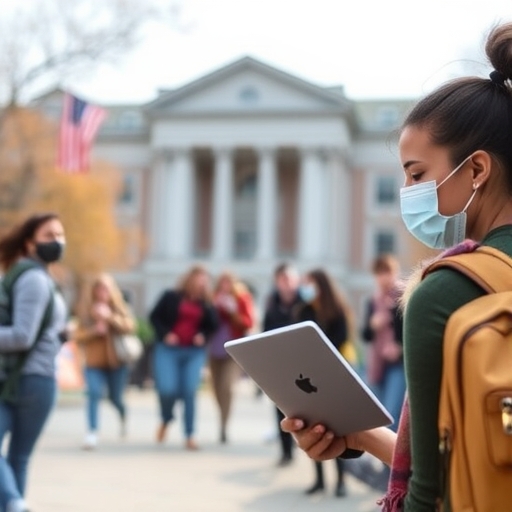How Has the Pandemic Affected College Students?
The COVID-19 pandemic has had a profound impact on virtually every aspect of life, and college students are no exception. From changes in learning environments to mental health challenges, the ripple effects of the pandemic continue to shape the experiences of students across the globe. In this article, we will explore the various ways the pandemic has affected college students, including education, mental health, finances, and social life, along with strategies for coping and moving forward.
The Shift to Online Learning
Transition to Remote Education
When the pandemic hit in early 2020, colleges and universities were forced to quickly pivot to remote learning. This transition has had mixed effects on students:
- Accessibility: While some students thrived in an online environment, others struggled due to lack of access to technology or a conducive home learning environment.
- Quality of Education: Many students reported feeling that the quality of education declined. The lack of in-person interaction with professors and peers made it difficult to engage fully with the material.
- Adaptability: Some students developed new skills, such as self-discipline and time management, as they adapted to online learning.
- Isolation: The shift to online learning and social distancing measures led to feelings of loneliness and isolation.
- Uncertainty: The unpredictability of the pandemic created anxiety about the future, including job prospects and academic success.
- Loss of Routine: Many students struggled with the lack of structure that in-person classes provided, leading to decreased motivation and increased stress.
- Therapy and Counseling: Many institutions expanded their mental health services, offering teletherapy and online resources.
- Mindfulness and Meditation: Students increasingly adopted practices such as mindfulness and meditation to reduce stress and anxiety.
- Physical Activity: Engaging in regular exercise, whether through at-home workouts or outdoor activities, has been crucial for mental well-being.
- Job Loss: Many students lost part-time jobs that helped fund their education and living expenses.
- Increased Tuition Costs: Some universities raised tuition fees for online courses, prompting concerns about the value of education.
- Financial Aid: The demand for financial aid increased, as many students sought assistance to cover tuition and living expenses.
- Budgeting: Many students created strict budgets to manage their finances during the uncertain economic climate.
- Seeking Scholarships: Increased competition for scholarships and grants led students to actively search for additional funding opportunities.
- Part-Time Work: Students sought remote or flexible part-time jobs to accommodate their academic schedules.
- Limited Interactions: Social distancing measures resulted in fewer opportunities for in-person gatherings, affecting friendships and social networks.
- Virtual Events: Many colleges organized virtual events, which provided some social interaction but lacked the energy and connection of in-person gatherings.
- New Relationships: Some students found new ways to connect, forming friendships through online platforms and virtual study groups.
- Virtual Hangouts: Platforms like Zoom and Discord became popular for hosting virtual game nights or study sessions.
- Outdoor Activities: Students organized safe, socially-distanced outdoor activities, such as picnics or hikes, to maintain connections.
- Support Groups: Many students formed support groups to discuss shared experiences and cope with challenges together.
- Grade Disparities: Studies have shown that students from marginalized backgrounds experienced greater academic setbacks than their peers.
- Pass/Fail Options: Many institutions offered pass/fail grading options to alleviate stress, but this also raised concerns about future academic and career opportunities.
- Skill Development: The pandemic has accelerated the need for digital skills, prompting students to seek online courses and certifications.
- Job Market Uncertainty: Graduating students must navigate a competitive job market, often with limited work experience due to the pandemic.
- Networking: Students are increasingly utilizing online networking platforms to connect with professionals in their fields.
Comparison of Learning Environments
| Aspect | In-Person Learning | Online Learning |
|---|---|---|
| Interaction | Face-to-face communication | Virtual communication |
| Engagement | High engagement through discussions | Variable engagement, often lower |
| Accessibility | Dependent on campus resources | Dependent on internet access |
| Flexibility | Set class schedules | Flexible timing, self-paced |
| Resources | Immediate access to libraries | Digital resources, potential gaps |
Mental Health Challenges
Increased Anxiety and Depression
The pandemic has led to a significant rise in mental health issues among college students. Factors contributing to this increase include:
Coping Strategies
To combat these mental health challenges, students have turned to various coping strategies:
Financial Impact
Job Loss and Economic Instability
The pandemic has caused widespread economic disruption, affecting college students in several ways:
Financial Strategies
To navigate these challenges, students employed various financial strategies:
Social Life and Relationships
Changes in Social Dynamics
The pandemic drastically altered the social life of college students. Key changes include:
Strategies for Maintaining Connections
To foster relationships during the pandemic, students adapted in several ways:
Academic Performance and Future Prospects
Academic Outcomes
The pandemic’s impact on academic performance has been significant. Some students have excelled while others have faced challenges:
Preparing for the Future
As students look to the future, they face unique challenges and opportunities:
Conclusion
The COVID-19 pandemic has fundamentally reshaped the college experience for students worldwide. From the transition to online learning and the rise in mental health challenges to financial difficulties and changes in social dynamics, the effects of the pandemic are profound and lasting. As students continue to navigate these challenges, it is essential to prioritize mental health, seek support, and adapt to the evolving landscape of education and the job market.
FAQ
How has the pandemic specifically affected college students’ mental health?
The pandemic has led to increased levels of anxiety and depression among college students due to isolation, uncertainty about the future, and the loss of routine.
What resources are available for students struggling with mental health issues?
Many colleges offer counseling services, both in-person and online. Additionally, there are numerous mental health apps and hotlines available for support.
Are students facing financial difficulties due to the pandemic?
Yes, many students lost part-time jobs and faced increased tuition costs, leading to greater reliance on financial aid and scholarships.
How can students maintain social connections during the pandemic?
Students can use virtual platforms for socializing, engage in outdoor activities while following safety guidelines, and participate in online study groups or support networks.
What skills are important for students to develop during this time?
Digital literacy, adaptability, and effective communication skills are increasingly important, as many aspects of education and work have moved online.
By understanding the multifaceted effects of the pandemic, college students can better navigate these unprecedented times and emerge stronger and more resilient.





